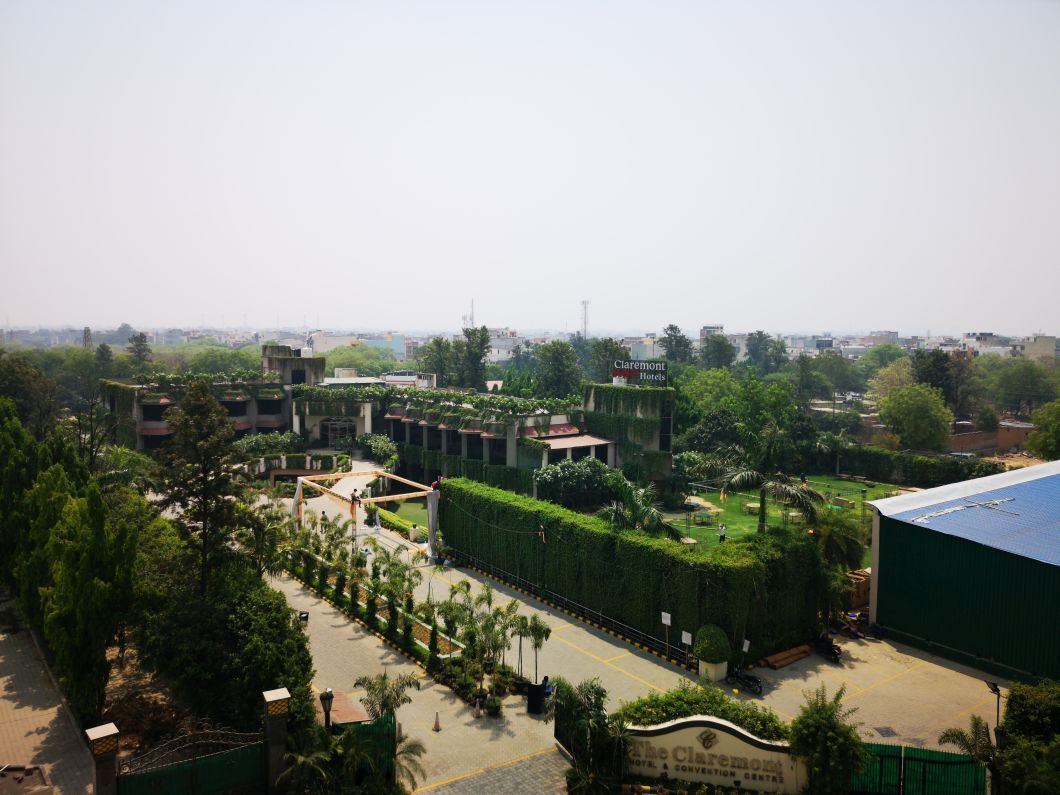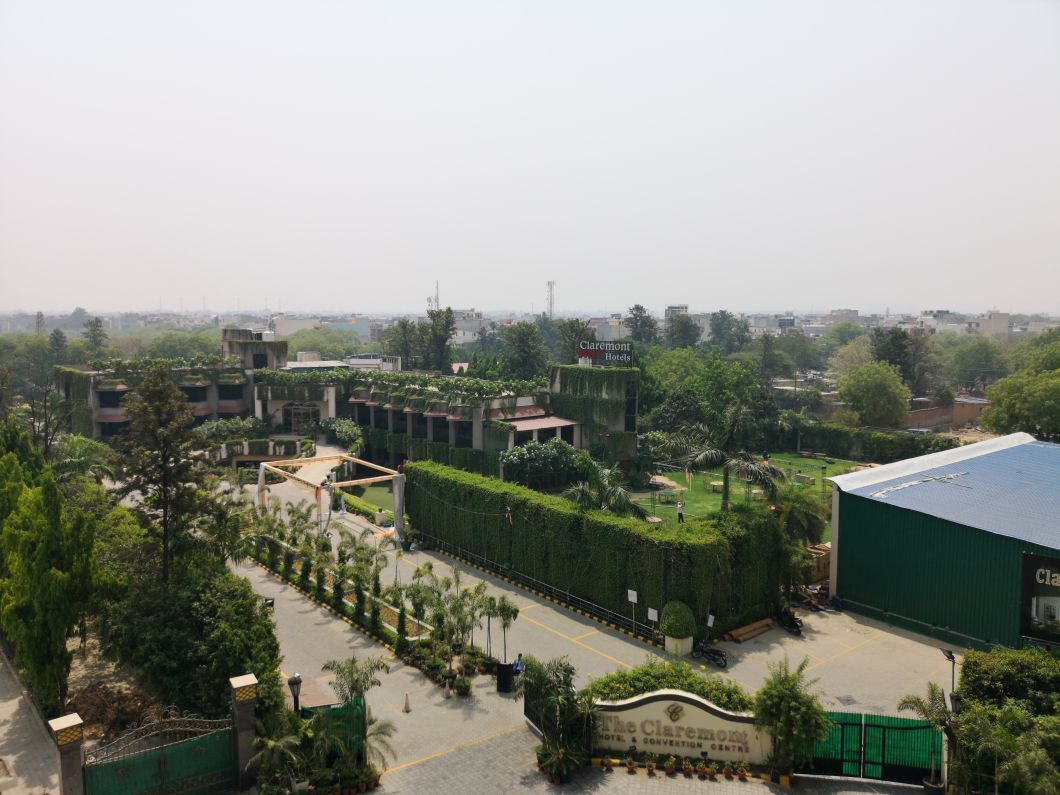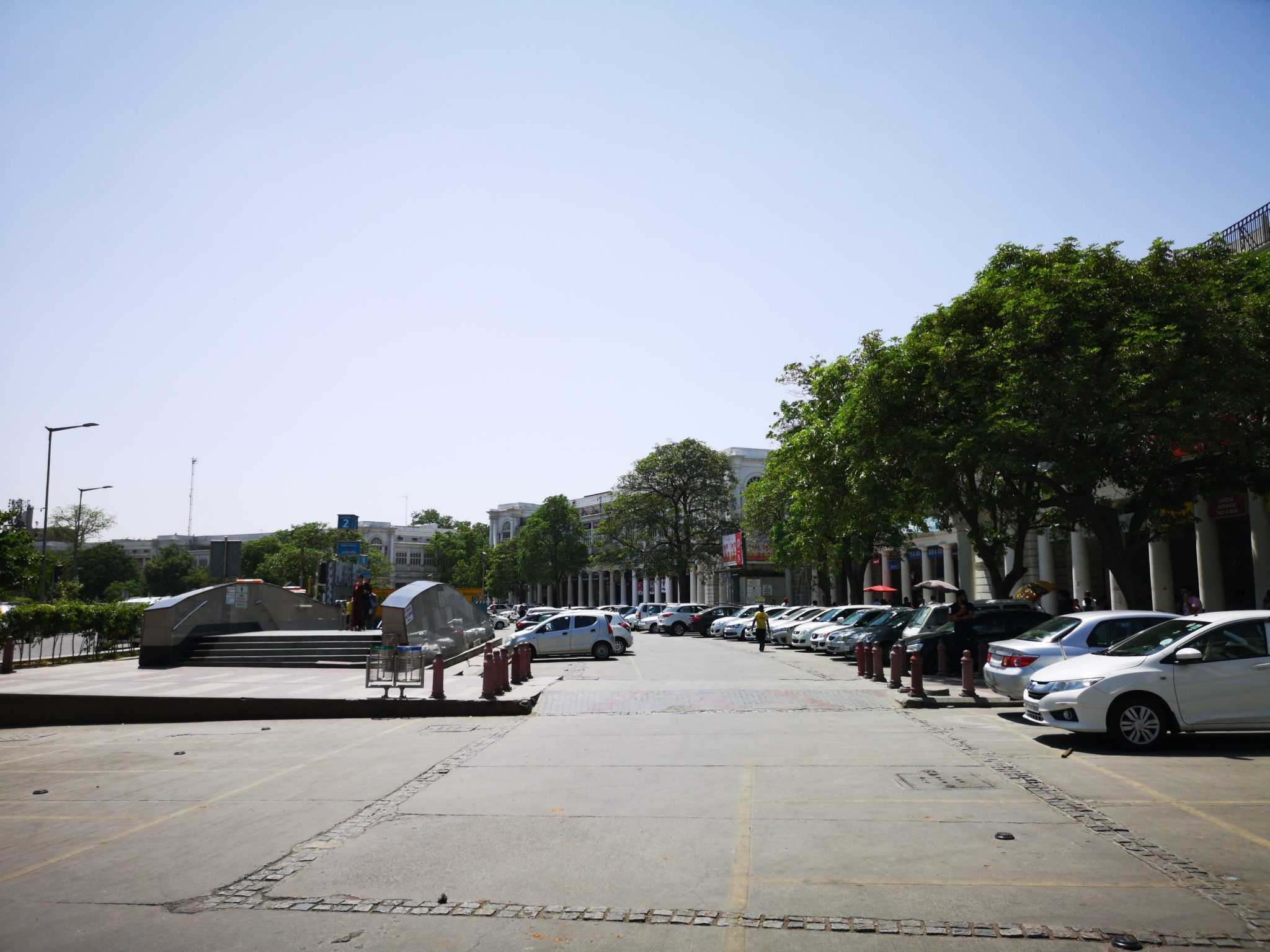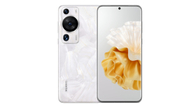Did you know that Huawei is the world’s third-largest smartphone brand? Talking only about Android smartphones, the Chinese brand ranks second.
But even with such high standing globally, Huawei hasn’t been able to make a mark with its phone offerings in India. While its sub-brand Honor has continued to grow in the subcontinent and other markets, the parent company has been quiet since the launch of the P9 (review), which landed back in August 2016.
With the P20 series though, Huawei aims to change all that. The range includes a trio of smartphones, catering to both the mid-range and the premium categories. While the brand chose to just launch the P20 Lite (first impressions) and the P20 Pro (first impressions) in India – it launched the duo in the subcontinent within a month of their global unveiling. Between the two, it’s clear that all eyes (pun intended) are on the P20 Pro, the world’s first smartphone with triple cameras at the back. But is that all there’s to it? That’s what I’m here to find out in this review.
Table of Contents
Specs at a glance
| Display | |
| Size | 6.1 Inch |
| Resolution | 1080 x 2240 pixels |
| Performance | |
| CPU | Quad core, 2.36 GHz + Quad core, 1.8 GHz, HiSilicon Kirin |
| RAM | 6 GB |
| Storage | |
| Internal memory | 128 GB |
| Battery | |
| Capacity | 4000 mAH, Li-ion, Non removable |
| Camera | |
| Primary camera | 40 MP |
| Secondary camera | 24 MP |
| Connectivity | |
| Network support | Dual SIM 4G |
| Other options | Wi-Fi, Bluetooth 4.2, GPS |
| Others | |
| Battery Capacity | 4000 |
| Operating system | Android 8.1 Oreo |
Design and display: a thing of beauty
Dimensions: 155 x 73.9 x 7.8 mm Weight: 180 grams |
Even before the launch, the leaked Twilight hue of the P20 and P20 Pro gathered a lot of eyeballs. Sadly, the brand hasn’t launched the unique gradient-based version of the smartphone in the Indian market. Still, the smartphone does manage to catch your attention, all thanks to screen dominating the fascia and the shiny glass panel at the rear along with the vertically-aligned triple cameras.
The brand has made the device available in blue colour in India, though we got a black one for review. Interestingly, while most smartphones with bezel-less designs either don’t ship with a fingerprint sensor or place it at the back, Huawei’s P20 Pro continues with the physical home button-cum-fingerprint scanner at front. While it might look odd and disturbs the uniformity of the design, the placement means that you can use your fingers to unlock the handset even when its kept flat on a table, which wouldn’t be possible if the fingerprint sensor is placed at the rear. You can also use the face unlock feature on the smartphone, which works surprisingly well – even in dim lighting.
Sadly, the same can’t be said about the notch up top. Following Apple’s iPhone X (and many other Android manufacturers), the P20 Pro offers a cut-out on top of the display. Even though it might help in offering a better screen-to-body ratio, it’s rather distracting. Further, since many apps aren’t optimised for it, the content gets cut off and spoils the experience. Thankfully, the smartphone does offer an option to hide the notch.
To accommodate the notch and the home button at the bottom, the Huawei P20 Pro comes with a unique screen aspect ratio of 18.7:9 – which is probably another reason why apps are incompatible for showing content in this format. It’s also interesting to note that while Huawei has offered 2K panels with its flagships in the past, the display on its latest smartphone comes with a full HD+ resolution. That said, the OLED panel offers punchy colours and ample brightness for reading it outdoors. The screen is quite sharp as well, though there’s no confirmation if it’s protected by any scratch-resistant layer.
In terms of the button and port placement, the P20 Pro doesn’t offer any surprises, except maybe for the fact that it’s another device that has retired the good ol’ 3.5mm audio socket. The phone does come with stereo speakers however, which offer loud and crisp output. It’s also interesting to see that the brand continues to offer an IR emitter on its smartphones. As mentioned above, the rear houses three cameras along with an LED flash, with two sensors slightly jutting out from the body slightly, making the device wobble when kept on a flat surface. Otherwise, the panel is quite minimal with just Leica and Huawei branding. The glass used at the back might offer a premium appeal, but attracts fingerprints and smudges like a moth to the flame – so a protective case is advisable, and the good thing is that the device comes bundled with one. Like its flagship peers, the P20 Pro is also impervious to dust and water, thanks to the IP67 rating.
Cameras: 1, 2, 3… action
Primary camera: 40 MP Flash: Dual-color LED Flash Secondary camera: 24 MP |
Huawei and Leica go back a long way. The Chinese brand partnered with the iconic German camera major back in 2016 for the launch of the Huawei P9, which offered dual cameras with RGB and monochrome sensors. While the P10 (review) continued with a similar setup, the P20 Pro takes that several notches above. Not only does the smartphone come with a pair of cameras to capture colour and monochrome info, it also offers an additional telephoto lens. But that’s not all, Huawei’s latest also aims to impress by offering a high-res 40MP f/1.8 primary sensor for capturing in RGB – matching up to yesteryear’s 41MP-toting Nokia 808 PureView and Lumia 1020. The monochrome f/1.6 shooter is rated at 20MP, while the telephoto shooter has an 8MP sensor and an aperture of f/2.4. Apart from the powerful array of camera sensors, the smartphone also comes with a spate of features to enhance the photography experience – 4D predictive focus (using a combination of laser, phase, contrast and deep focus), support for ISO levels of as high as 102,000 and Light fusion tech (which offers impressive images in low light).


Among the biggest functionality touted by the brand is AI Master, which analyses the subject being captured and matches it to 19 different object categories to adjust the camera settings automatically and offer the best picture quality. While it might seem like a gimmick, it works quite well by detecting scenes like food, close-ups, etc. and ensures better pictures. In some cases however, the processing is quite harsh, and oversaturates the entire scene (see the images above with and without this feature enabled). The only gripe is that the toggle for this feature is buried in the settings menu. I’d have preferred to turn auto processing off whenever I wanted a balanced photo overall, and not highlight a certain aspect.
One thing to note however is that even though the smartphone comes with a 40MP primary sensor, you won’t be able to enjoy features like optical zoom if you capture in this resolution. If you want to do that, then you have to lower the resolution to 10MP. While the resolution is reduced, the telephoto lens, in this case, lets you zoom up to 3x – which is better than the 2x zoom capabilities offered by other dual camera-toting smartphones. And on top of that, the phone offers 5x hybrid zoom as well. Even though it’s not hardware based, the Huawei P20 Pro ensures that the image quality isn’t compromised at 5x zoom, although some noise does creep in. The zoom options are available up front in the camera app, and even though the interface is quite packed, it’s quite easy to use. Along with the shutter button at the bottom, you get the ability to preview photos you’ve shot, capture videos as well as the option to switch to the front camera. Above that, there are different modes such as Portrait, Pro, and Night, with More giving you additional options such as Monochrome, Time-lapse, Light Painting, etc.
Photo with 1x zoom (left), 3x zoom (middle), and 5x hybrid zoom (right). The photos have been resized, and aren’t in their original resolution.
It’s clear that the Huawei P20 Pro’s hardware and software is packed to the gills as far as the cameras are concerned. So what about the image quality? In one word, it’s impressive. The device locks focus on the subject instantly and has a fast shutter speed too. The smartphone does complete justice to a variety of scenes, offering impressive level of detail and reproducing vibrant colours. Capturing in 40MP resolution of course, means better sharpness, but you won’t be losing out much while using 10MP resolution either as the images embedded below indicate. The optical zoom is also quite handy, letting you get closer to the subject without changing your position. You’ll also get a shallow depth of field effect while capturing close-ups, without turning on the dedicated bokeh mode. As far as the the Portrait Mode is concerned, Huawei has taken inspiration from the Apple iPhone X (review) to offer studio-like lighting effects with options like soft lighting, stage lighting, and butterfly lighting among others. The highlight however, is the night mode, which captures multiple pictures with different exposures and stitches them together to offer images which keep noise to the minimum.


Talking about selfies, the smartphone comes equipped with a high-res 24-megapixel sensor at front, which ensures well-detailed selfies. The front camera also comes with 3D lighting effects along with the software-based portrait mode, and it works surprisingly well. The selfies are separated well from the background and the edges remain sharp as well. Strangely however, the smartphone’s beautify mode is quite aggressive and seems to result in artificial-looking selfies even when the level is set to zero. Take a dekko at the camera samples captured by Huawei’s P20 Pro.
The P20 Pro has impressive video capabilities as well, at least on paper. Along with the ability to record in 4K at 60 fps, it’s among the very few smartphones that can capture HD super slow-mo videos at 960fps. Sadly however, the videos aren’t as smooth as one would like and the brand’s AIS (AI Image Stabilisation) doesn’t seem to be as effective.
All said and done, the Huawei P20 Pro certainly lives up to the DxOMark rankings, which has rated it as the best camera with a score of 109 – surpassing the Galaxy S9 and other smartphones.
Hardware and software: the speed head
Huawei was the first brand to introduce a dedicated chip for processing AI tasks with the HiSilicon Kirin 970. The octa-core processor comes with a clock speed of 2.36GHz along with an NPU (Neural Processing Unit). The flagship SoC has already proved its mettle with the Honor View10 (review) and ensures powerful performance, while being battery efficient. Coupled with 6-gigs of RAM, the smartphone offers lag-free usage even when multiple apps are running in the background. Unfortunately though, the Mali-G72 graphics engine doesn’t seem to be able to keep up with the games like PUBG. Not only there are visible frame drops, but the device gets noticeably hot as well.
While the operation is mostly smooth, there are times when the phone takes a extra split-second while opening an app or switching between them. The reason for the same can mostly be attributed to the software – which is Huawei’s proprietary EMUI 8.1 skin running atop Android 8.0 Oreo. It’s a heavy interface with custom icons and bloatware in the form of apps like Facebook, Netflix, and Truecaller as well as trial versions of games such as Asphalt Nitro. That said, there are useful features too. Phone Manager, for instance, lets you optimise aspects like performance, security, and battery with a single click.
On the storage side of things, the Huawei P20 Pro comes with 128GB of memory onboard. Even though it can’t be expanded further, it should easily be able to meet one’s need for installing apps and storing media.
One thing that differentiates the P20 Pro from its flagship peers is the battery capacity. Unlike other premium handsets which offer a maximum of 3,500mAh battery, the P20 Pro is fuelled by a beefy 4,000mAh cell. Even with the use of GPS, 4G, streaming podcasts and playing songs via Bluetooth for a couple of hours, along with the usual calling and messaging, the smartphone still had 20 to 30 percent battery levels remaining by the end of the day during my review period. Usually, I got a screen-on time of four hours and 30 minutes with the smartphone, which is quite impressive. The phone also comes with Huawei’s Super Charge technology, which juices it up fully in a little over two hours with the bundled adapter. Quick tip: in the battery section, you can toggle the option to darken the settings menu, which isn’t just easy on eyes, but consumes less battery too.
Should you buy it?
If I have to sum it up in one line, the Huawei P20 Pro is the brand’s strongest show yet, and is leaving no stone unturned to stand out amidst the competition. While its Leica-powered triple-camera setup will be the talking point, the smartphone comes in a stunning glass-sandwich design, offers a gorgeous display, and is equipped with loaded internals as well as a powerful battery.
Related read: Huawei P20 Pro vs Samsung Galaxy S9+
However, when we bring its pricing into the equation, then the P20 Pro doesn’t seem as attractive. Priced at Rs 64,999, the smartphone falls directly in the super-premium category, where brands like Samsung and Apple reign. In fact, the price point puts it directly against the Samsung Galaxy S9+ (review), which ships with a dual aperture feature in its primary 12MP camera, coupled with a 12MP telephoto lens, a sharper display and better processor. The smartphone also competes with the iPhone 8 Plus (review), which also offers dual rear cameras, although continues with a conventional form factor. Of course, if money is no bar, then the iPhone X is a great buy and comes with the notch too. If camera quality is what you’re looking for, then I believe that the Google Pixel 2 XL (review) still maintains its lead over others, unless you want features like optical zoom.
So does the Huawei P20 Pro offer enough to compete against the flagships from Apple and Samsung? Yes.
Can the latest from Huawei’s stable beat the iPhone X and Galaxy S9+? Well, if you have read the review, then the answer is quite nuanced, but the P20 Pro does come dangerously close.
Editor’s rating: 4 / 5
Pros
- Stunning design
- Impressive and versatile snappers
- Powerful performance
- Great battery life
Cons
- Powered by last year’s processor
- Heats up when stressed
- Steep pricing
Photos by Raj Rout
 Huawei P20 Pro Huawei P20 Pro | vs |  Samsung Galaxy S9 Plus Samsung Galaxy S9 Plus |
 Huawei P20 Pro Huawei P20 Pro | vs |  Apple iPhone 8 Plus Apple iPhone 8 Plus |

















































